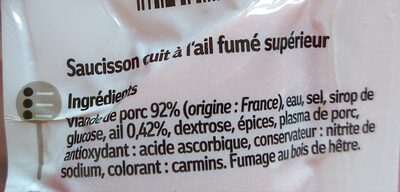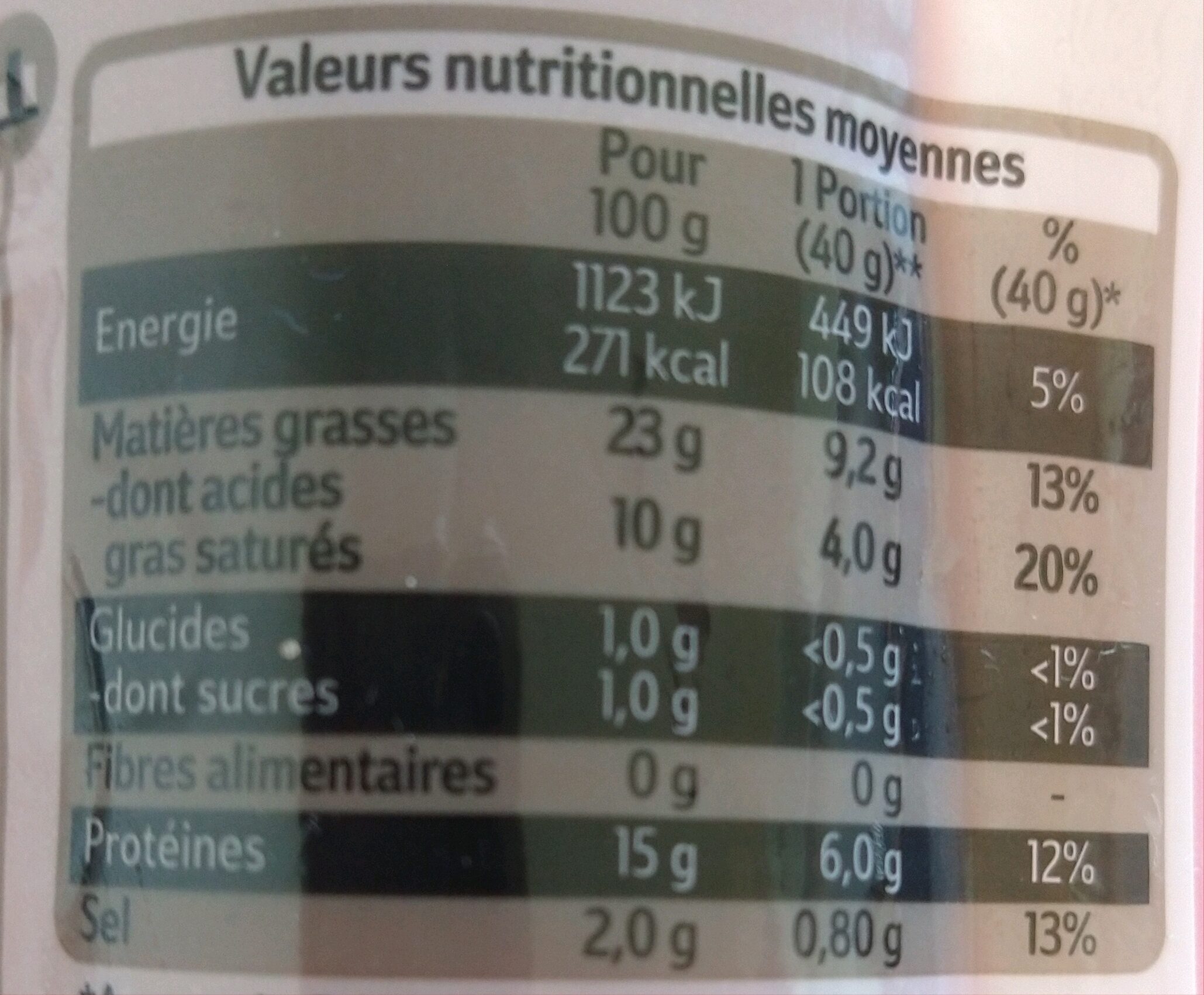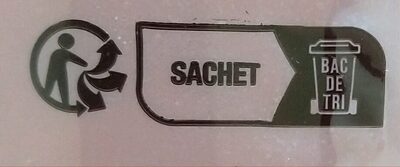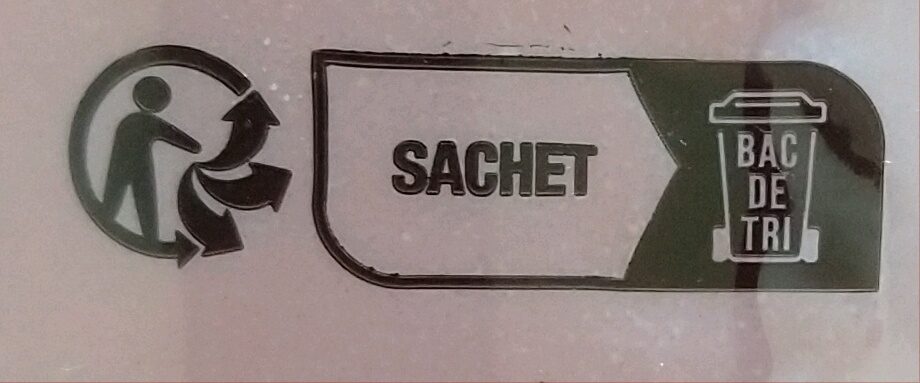Saucisson Cuit à l'Ail Fumé - Brocéliande - 300 g
Ambiguous barcode: This product has a Restricted Circulation Number barcode for products within a company. This means that different producers and stores can use the same barcode for different products.
×
Barcode: 26006758
Common name: Saucisson à l'ail
Quantity: 300 g
Packaging: Plastic, Fresh, Vacuum-packed
Brands: Brocéliande
Categories: Meats and their products, Meats, Prepared meats, Fresh foods, Pork and its products, Cured sausages, Pork, fr:Charcuteries cuites, Garlic sausage, fr:Saucissons cuits
Labels, certifications, awards:
French meat, de:Ohne Zusatz von Polyphosphaten, French pork, Green Dot, Nutriscore, Smoked with beech wood, fr:Eco-Emballages
Origin of ingredients: France
Manufacturing or processing places: Brocéliande-ALH (Filiale Cooperl Arc Atlantique) - 12 Boulevard du 21ème siècle - Les Hauts Vents - 14310 Villers Bocage, Calvados, Basse-Normandie, France
Traceability code: FR 14.752.020 CE - Villers-Bocage (Calvados, France), EMB 14752B - Villers-Bocage (Calvados, France), FR 56.140.006 CE - Moréac (Morbihan, France)
Link to the product page on the official site of the producer: http://www.broceliande.fr/index.php/accu...
Stores: Aldi
Countries where sold: France
Matching with your preferences
Report a problem
Data sources
Product added on by nounours
Last edit of product page on by roboto-app.
Product page also edited by date-limite-app, ecoscore-impact-estimator, jacob80, kiliweb, manu1400, mismer, packbot, quechoisir, yuka.sY2b0xO6T85zoF3NwEKvlnBtc9znpyvpHQXVixPW54euf5bNMPBc-KHjGas.












